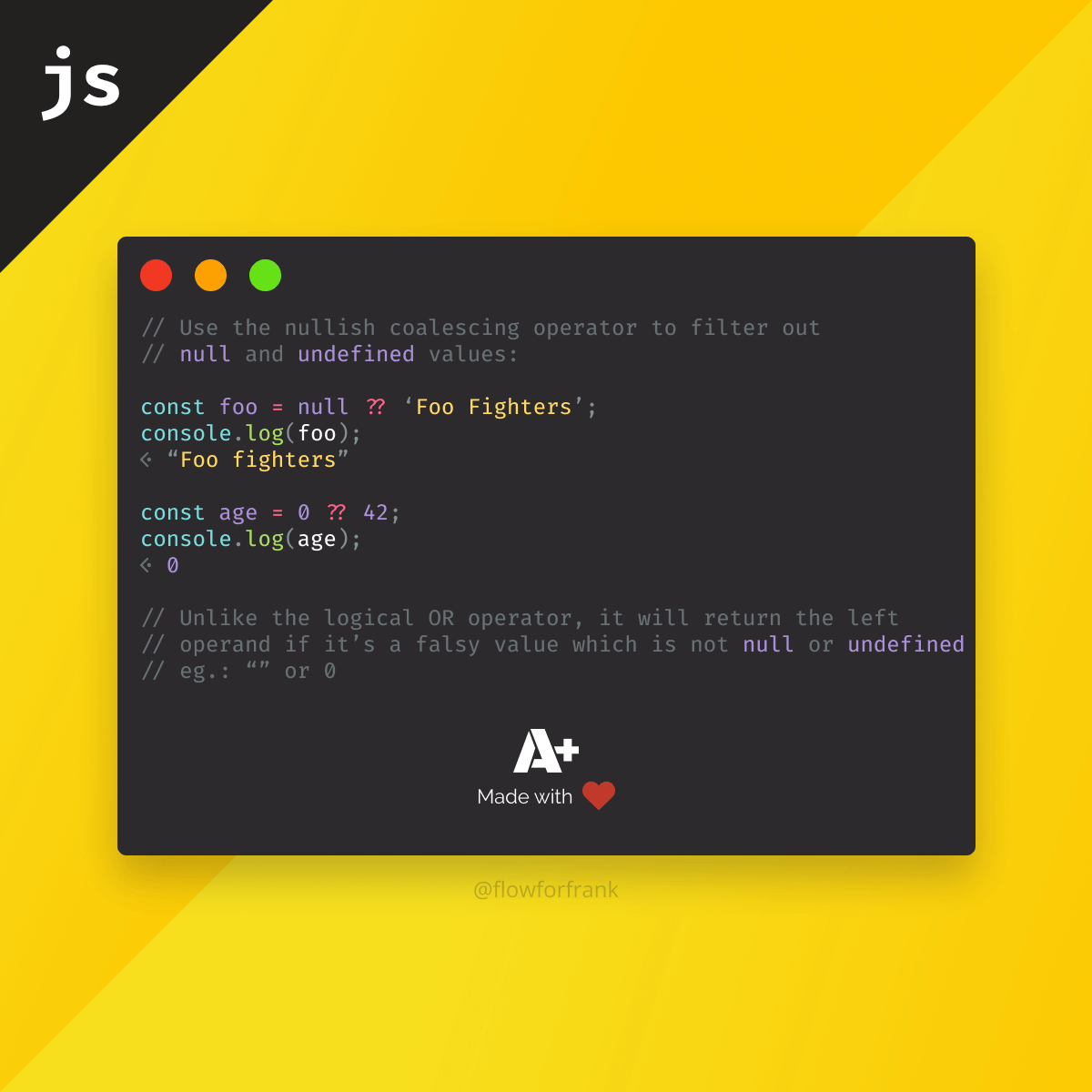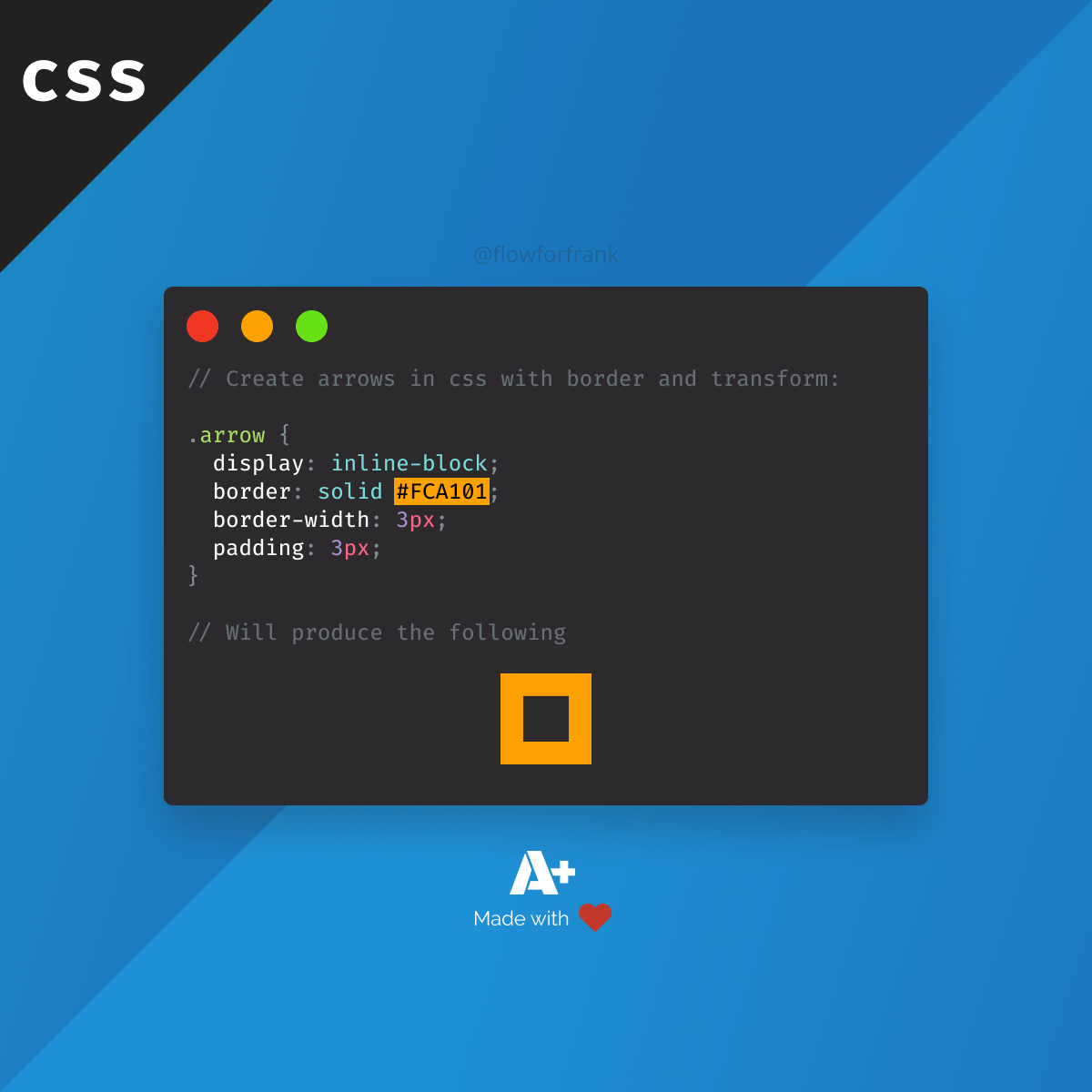
What is the Nullish Coalescing Operator in JavaScript?
The nullish coalescing operator (??) in JavaScript works similar to the logical OR operator. With logical OR, you can use a short circuit evaluation to provide default values:
// Short circuit (set default values) with logical OR
const fileName = this.fileName || '😶';
// If this.fileName is undefined, 😶 will be used as a fallback valueHowever, by using the nullish coalescing operator, you can return the left hand side of the operand if it's falsy, but not null or undefined:
// Use the nullish coalescing operator to filter out null and undefined values:
const foo = null ?? 'Foo Fighters';
console.log(foo); // This will return “Foo fighters”
const age = 0 ?? 42;
console.log(age); // This will return 0
// Unlike the logical OR operator, it will return the left
// operand if it’s a falsy value which is not null or undefined
// eg.: “” or 0This is not the case for logical OR. It will return the right-hand side, if the value is falsy. (Which means 0 or "" are also included)
Keep in mind, this is only supported for the latest browsers. You can check the support table at caniuse.com
If you are using babel, you can use the @babel/plugin-proposal-nullish-coalescing-operator plugin for it.

Resource
Access 100+ interactive lessons
Unlimited access to hundreds of tutorials
Prepare for technical interviews






